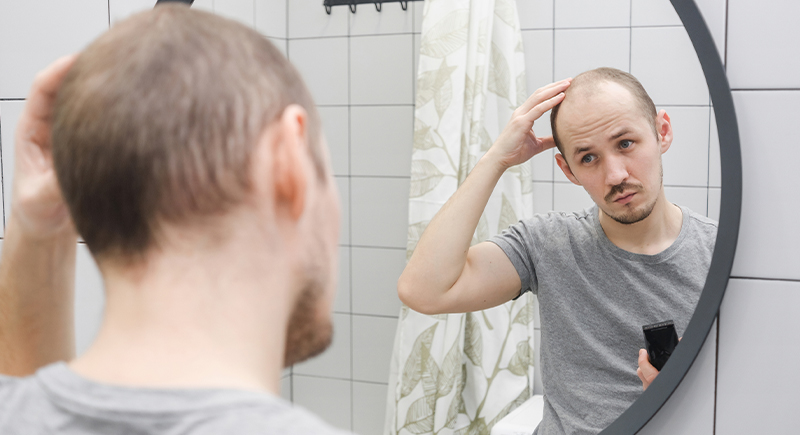Think Your Mom’s Side Caused Your Baldness? Here’s the Truth
You’ve likely been told to look at your mother’s side of the family to predict your hair future. If her father had a full head of hair, you’re safe, but if he didn’t, you’re not. This kind of advice gets passed around easily, but it doesn’t hold up to real science.
Hair loss, especially male pattern baldness, isn’t that simple. It’s not caused by one side of the family, and it’s not controlled by one gene. A range of factors influence it, and many of the popular theories don’t reflect how it actually works. Here’s what’s accurate based on current research and expert opinion.
Hair Loss Involves Multiple Genes

Image via iStockphoto/Regina Burganova
The gene often blamed for baldness sits on the X chromosome, and men inherit that chromosome through their mother. That gene controls androgen receptors, which are involved in how hair follicles respond to hormones. Some studies show a strong link between this gene and baldness risk, but this is only part of the picture.
Male pattern baldness is polygenic. That means more than one genetic marker plays a role, and they don’t all live on the X chromosome. Research has shown that a man with a father who lost hair early may also face a higher risk. History across both sides of the family can influence how early or aggressively it shows up.
Hormone Activity Triggers the Process
One of the most common questions people have about hair loss is what actually sets it off. Even when someone knows baldness runs in their family, it still feels unclear why it starts when it does. The answer often comes down to how the body handles a hormone called dihydrotestosterone, or DHT.
DHT is made when the body changes some testosterone into a stronger form. If your hair follicles are sensitive to it, the hormone slowly wears them down. The hairs they produce get thinner and shorter over time, until the follicles stop growing hair at all.
This type of thinning typically starts near the temples or the crown. As the process continues, the thinning becomes more visible and the gaps more permanent. The pattern is well-studied and tends to follow the same general shape in most people.
However, your entire head will not be impacted in the same manner. This is because some follicles are resistant to DHT and keep growing even after others have stopped. That’s why men often keep a band of hair along the sides and back, even when the top has thinned out significantly.
External Factors Influence Timing

Image via iStockphoto/Kikujiarm
While genetics determines if you will experience male pattern baldness, lifestyle can affect when and how fast it develops. Diets low in key nutrients like iron, zinc, vitamin D, and B vitamins may worsen thinning. Meanwhile, stress can push more follicles into the resting phase, which leads to temporary shedding.
Other health issues, like thyroid disorders or high cholesterol, can also create the right environment for hair loss to progress. If shedding seems sudden or unusually fast, there may be underlying conditions that need to be addressed.